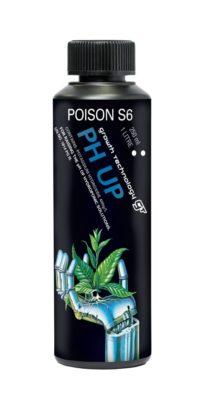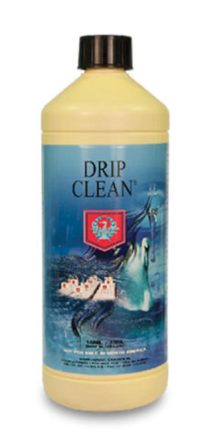Flushing your plants is an essential step in the cultivation process to ensure a high-quality end product. It involves removing excess nutrients and salts from the plant’s root system and growing medium, typically by running water through the medium. Flushing is important for several reasons:
- Improved taste and smoothness: Flushing helps remove any residual nutrients and chemicals, which can cause a harsh, unpleasant taste in the final product. Properly flushed buds will have a smoother smoke and more natural flavor.
- Reduced nutrient lockout: Accumulated salts and excess nutrients can cause nutrient lockout, making it difficult for the plant to absorb essential nutrients. Flushing helps to prevent this problem, ensuring better nutrient uptake for a healthier plant.
- Better bud quality: Properly flushing your plants leads to better bud quality, with more potent and aromatic flowers.
- Prevent nutrient burn: Excessive nutrient buildup can cause nutrient burn, visible as yellowing, browning, or curled leaves. Flushing helps prevent these issues, maintaining the plant’s overall health and appearance.
How to Flush
There are no strict rules for flushing because there are many factors that will influence how long you should flush for and how much water you should use. For example, larger plants with larger pots and big root systems can take longer to flush. It can also take longer to flush in certain mediums such as soil. As a general rule, be sure to think ahead. You don’t want to overwater your plants trying to flush out residual salts and chemicals. Conversely, you don’t want to stress your plants by flushing for too long. Keep an eye on your plants for signs of problems and adjust your flushing schedule accordingly. Ensure your flush water is pH balanced and measure the EC of the runoff to ensure levels are dropping.
Flushing in Different Growing Mediums
– Soil: Soil is a buffer, which means it can hold onto nutrients and release them over time. To flush in soil, you’ll need a large volume of water — typically three times the volume of your pot. For example, if you have a 5-gallon pot, you’d need 15 gallons of water to thoroughly flush the soil.
– Coco Coir: Coco is a much more immediate medium than soil, which means it doesn’t hold onto nutrients as strongly. Flushing coco coir typically involves using a volume of water that’s double the size of the pot.
– Perlite: Perlite doesn’t hold onto nutrients at all, so you can flush it much like you would coco coir.
– Wool (Rockwool): Rockwool has a good holding capacity for water and nutrients. Flush it with an amount of water that’s two to three times the volume of the pot.
– Clay (Hydroton): Clay pebbles, or hydroton, also don’t hold onto nutrients. These can be flushed similarly to perlite.
When to Flush
Flushing is usually done a week or two before you plan to harvest your plant. When 10-20% of the trichomes (the tiny hair-like extensions on the buds) have turned amber, it’s a good sign that your plant is ready to be flushed. This timing could change slightly depending on the strain, the growing environment, and personal preference.
Although flushing is usually done in the final weeks leading up to harvest, there are other times when flushing might be useful too:
- During the grow cycle: Some growers flush their plants in the middle of the grow cycle to remove any excess nutrients or to correct nutrient imbalances that could cause issues like nutrient lockout.
- Switching between growth stages: Flushing could be beneficial when transitioning from the vegetative stage to the flowering stage to ensure the plant is not overloaded with nutrients that were needed for the vegetative stage but could be harmful in the flowering stage.
- When the plant is stressed: If your plant shows signs of nutrient burn or other stressors, a mid-cycle flush can help reset the plant’s health.
It is worth noting that there’s debate within the cultivation community about the efficacy and necessity of flushing. Some growers swear by it, believing it leads to a smoother smoke and better-tasting buds, while others see it as unnecessary or potentially harmful.
Flushing Plants Grown with Organic Inputs
Organic nutrients, derived from living organisms or their byproducts, can provide plants with essential nutrients while promoting overall soil health. However, despite the benefits of organic growing, it’s still crucial to flush your plants to ensure a high-quality end product.
Mineral nutrients can be easier to flush out compared to organic nutrients. This is because mineral nutrients are in a form that’s readily available to the plant, and they can be more easily washed away.
On the other hand, organic nutrients are broken down by microbes in the soil before they’re available to the plant. Since they’re part of a complex soil ecosystem, they can’t be completely flushed out. Instead, you’ll just need to stop feeding additional nutrients and let the plant and use up what’s left.
How to Tell If a Plant Has Been Sufficiently Flushed
When flushing your plants, you’ll want to make sure that all excess nutrients have been removed. Signs of a properly flushed plant include:
- Yellowing leaves: As the plant uses up stored nutrients, the leaves will start to turn yellow.
- Improved taste and smoother experience: If you’ve previously harvested without flushing, you’ll notice that properly flushed buds taste better and is smoother.
- White ash: After drying and curing, well-flushed buds will produce white ash.
Flushing is an important part of growing, and it should be done carefully and thoroughly. Remember to always observe your plants closely during the flushing period, as different strains and growing conditions may require slight adjustments to the process.













